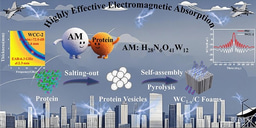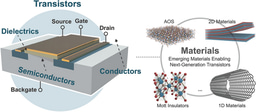Indium-MOF as Multifunctional Promoter to Remove Ionic Conductivity and Electrochemical Stability Constraints on Fluoropolymer Electrolytes for All-Solid-State Lithium Metal Battery

In the quest for high-performance all-solid-state lithium metal batteries (ASLMBs), researchers are constantly seeking innovative solutions to enhance the electrochemical stability and ionic conductivity of fluoropolymer electrolytes. A recent article published in Nano-Micro Letters, authored by Professor ZhengMing Sun and Professor Long Pan from Southeast University, presents a groundbreaking approach using indium-based metal–organic frameworks (In-MOFs) as a multifunctional promoter to significantly improve the performance of poly(vinylidene fluoride–hexafluoropropylene) (PVH) electrolytes.
Why This Research Matters
- Enhanced Electrochemical Stability: Traditional fluoropolymer electrolytes often suffer from poor electrochemical stability against lithium metal anodes, leading to rapid degradation and failure of the battery. This study demonstrates that In-MOFs can effectively protect PVH from reacting with lithium metal anodes, forming a stable inorganic-rich solid electrolyte interphase (SEI) layer that prevents side reactions and promotes uniform lithium deposition.
- Improved Ionic Conductivity: The incorporation of In-MOFs not only enhances the electrochemical stability but also significantly boosts the ionic conductivity of the PVH electrolyte, achieving an ultrahigh ionic conductivity of 1.23 × 10−3 S cm−1 at 25 °C. This improvement is crucial for the practical application of ASLMBs, as it enables faster ion transport and higher battery performance.
- Potential for Practical Applications: The enhanced stability and conductivity of the PVH-IM composite electrolyte make it highly suitable for next-generation ASLMBs. The study demonstrates the potential of PVH-IM in all-solid-state full cells, showing outstanding rate capability and cycling stability, with a capacity retention of 95.7% after 130 cycles at 0.1C and 80.0% after 280 cycles at 0.5C.
Innovative Design and Mechanisms
- Indium-Based Metal–Organic Framework (In-MOF): In-MOFs are highlighted as ideal materials for enhancing the performance of fluoropolymer electrolytes due to their highly porous structures, open metal sites, and 1D morphology. The In-MOF used in this study plays a triple role: (1) adsorbing and converting free residual solvents into bonded states to prevent side reactions with lithium anodes, (2) forming inorganic-rich SEI layers to protect PVH from reacting with lithium anodes and promote uniform lithium deposition, and (3) reducing PVH crystallinity and promoting Li-salt dissociation.
- Composite Electrolyte Formation: The PVH-IM composite electrolyte is prepared by mixing PVH and In-MOF through a simple solution-casting method. The In-MOF nanorods are uniformly dispersed in the PVH matrix, significantly reducing the crystallinity of PVH and increasing the amorphous regions, which are conducive to fast Li+ transport.
- Density Functional Theory (DFT) and Molecular Dynamics Simulations: These computational tools were used to investigate the interaction between In-MOF and residual DMF molecules, confirming the strong adsorption capability of In-MOF. The simulations also revealed the favorable reaction thermodynamics between In-MOF and lithium metal anodes, leading to the formation of a stable SEI layer.
Applications and Future Outlook
- All-Solid-State Lithium Metal Batteries: The PVH-IM composite electrolyte demonstrates excellent performance in all-solid-state LFP|PVH-IM|Li full cells, showing high reversible specific capacities and outstanding cycling stability. The cells also exhibit good flexibility and high safety under extreme conditions, making them highly suitable for practical applications.
- High-Voltage Applications: The study also explores the compatibility of PVH-IM with high-voltage cathode materials, such as LiNi0.6Co0.2Mn0.2O2(NCM622), demonstrating excellent rate performance and cycling stability, with a high initial specific capacity of 140.0 mAh g−1 and a capacity retention of 98.9% after 50 cycles at 0.1C under 25 °C.
- Future Research: Future work will focus on further optimizing the In-MOF structure and composition to enhance the performance of fluoropolymer electrolytes. The potential applications of PVH-IM in other types of batteries and energy storage devices will also be explored.
This innovative approach to enhancing the electrochemical stability and ionic conductivity of fluoropolymer electrolytes using In-MOFs represents a significant step forward in the development of high-performance ASLMBs. Stay tuned for more groundbreaking research from Professor ZhengMing Sun and Professor Long Pan's team at Southeast University as they continue to push the boundaries of energy storage technology.
Follow the Topic
-
Nano-Micro Letters

Nano-Micro Letters is a peer-reviewed, international, interdisciplinary and open-access journal that focus on science, experiments, engineering, technologies and applications of nano- or microscale structure and system in physics, chemistry, biology, material science, and pharmacy.






Please sign in or register for FREE
If you are a registered user on Research Communities by Springer Nature, please sign in